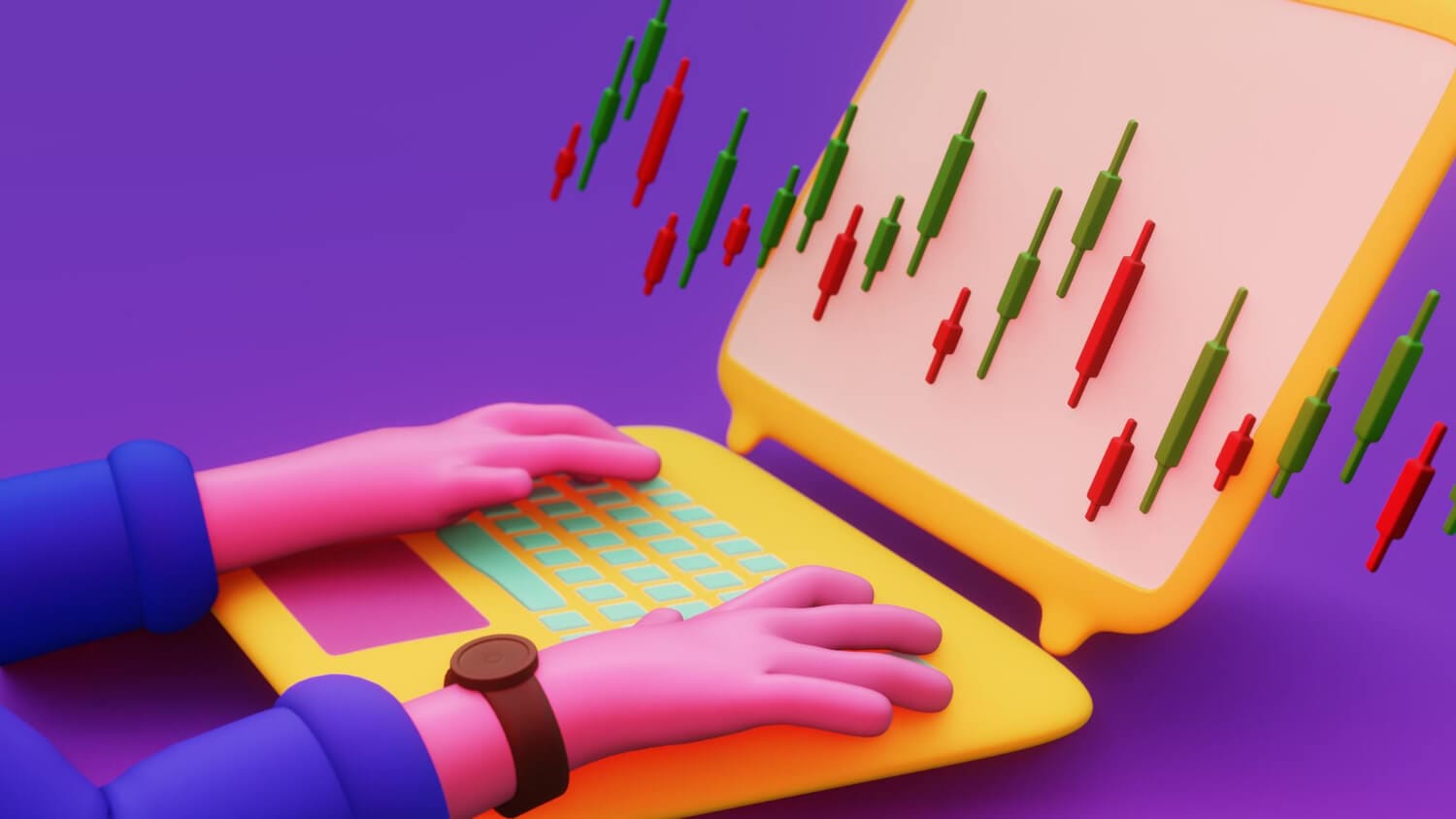
The Forex market has a diverse set of participants, including central banks, commercial banks, financial institutions, multinational corporations, and retail traders. Each participant plays a unique role in the market. For instance, central banks engage in Forex trading to manage their national currency’s value, while retail traders are individual traders seeking to profit from currency price movements.
Trading Hours and Sessions: The Forex market operates around the clock due to its global nature. It is divided into different trading sessions, each corresponding to a major financial center. These sessions include the Tokyo session, London session, New York session, and Sydney session. Trading sessions overlap, providing continuous trading opportunities.
1.2 Forex Instruments and Pairs
![]()
Currency Pairs: In Forex trading, currencies are quoted in pairs. A currency pair consists of two currencies, where one currency is exchanged for another. For example, in the EUR/USD currency pair, the euro is the base currency, and the U.S. dollar is the quote currency. Understanding how currency pairs work is fundamental because it determines how you profit or lose in Forex trading.
Types of Pairs: Currency pairs are categorized into three main types: major pairs, minor pairs, and exotic pairs.
- Major pairs: These involve the most liquid and widely traded currencies, such as EUR/USD, GBP/USD, and USD/JPY.
- Minor pairs: These pairs don’t include the U.S. dollar but still involve major currencies (e.g., EUR/GBP, AUD/JPY).
- Exotic pairs: Exotic pairs involve one major currency and one from a smaller or emerging-market economy (e.g., USD/TRY, EUR/SGD). Exotic pairs tend to have lower liquidity and higher spreads.
Reading Quotes: Forex currency pairs are quoted with bid and ask prices. The bid price represents the maximum price a buyer is willing to pay, while the ask price represents the minimum price a seller is willing to accept. The difference between the bid and ask price is known as the spread, which is a cost incurred by traders.
1.3 Market Analysis

Fundamental Analysis vs. Technical Analysis: Forex traders use two main approaches to analyze the market: fundamental analysis and technical analysis.
Fundamental analysis involves studying economic indicators, political events, and other factors that can influence a currency’s value. Traders analyze data like interest rates, GDP growth, employment reports, and geopolitical events to make informed trading decisions.
Technical analysis focuses on historical price data and trading volumes. Traders use charts, technical indicators, and patterns to identify potential future price movements. Common technical indicators include Moving Averages, Relative Strength Index (RSI), and Bollinger Bands.
Economic Indicators: Economic indicators are essential tools for fundamental analysis. Traders pay close attention to economic data releases, such as unemployment rates, inflation figures, and central bank policy decisions, as they can significantly impact currency prices. Understanding how these indicators work and their implications is critical for making informed trading decisions.
Technical Analysis Tools: Technical analysis involves the use of various tools and techniques to analyze price charts and predict future price movements. Common technical analysis tools include:
- Charts: Candlestick charts, line charts, and bar charts display historical price data.
- Indicators: These include Moving Averages, Relative Strength Index (RSI), MACD (Moving Average Convergence Divergence), and more.
- Patterns: Traders look for chart patterns such as head and shoulders, double tops and bottoms, and triangles to identify potential trend reversals or continuations.
Understanding these fundamental and technical aspects of the Forex market provides traders with a solid foundation for making informed trading decisions and managing risk effectively.
II. The Forex Emotional Trap
![]()
2.1 The Psychology of Trading
Emotions in Trading: Forex trading is a highly emotional endeavor. Traders often experience a range of emotions, including fear, greed, hope, and regret. These emotions can influence their decision-making process and lead to impulsive or irrational choices. For example, fear can lead to hesitation and missed opportunities, while greed can lead to overconfidence and excessive risk-taking.
Cognitive Biases: Cognitive biases are systematic patterns of deviation from norm or rationality in judgment, often leading to perceptual distortion, inaccurate judgment, illogical interpretation, or what is broadly called irrationality. In trading, cognitive biases can have a significant impact. Common biases include confirmation bias (seeking information that confirms preconceived beliefs), overconfidence (overestimating one’s abilities), and loss aversion (the tendency to prefer avoiding losses over acquiring equivalent gains).
Discipline and Self-Control: Successful traders understand the importance of discipline and self-control. Discipline involves adhering to a well-defined trading plan and strategies, while self-control helps traders resist emotional impulses that can lead to poor decision-making. Maintaining discipline and self-control is crucial for managing risk and avoiding common emotional trading pitfalls.
2.2 Common Emotional Pitfalls
Overtrading: Overtrading occurs when traders execute too many trades, often with high risk, in a short period. This behavior can stem from various emotions, including a desire for quick profits or the fear of missing out on opportunities. Overtrading can lead to significant losses due to increased exposure to the market.
Revenge Trading: Revenge trading is a reaction to losses where traders try to recoup their losses by making impulsive and emotionally driven trades. This behavior can escalate losses and lead to a cycle of revenge trading, which can be financially damaging.
Fear of Missing Out (FOMO): FOMO is the fear that one is missing out on profitable trading opportunities. Traders experiencing FOMO may rush into trades without proper analysis or risk management, often entering the market at unfavorable prices. This behavior can lead to losses when markets correct.
2.3 The Fear of Loss

Fear in Trading: Fear is a natural and common emotion in Forex trading, especially when real money is at stake. Traders fear the possibility of losing their hard-earned capital, which can lead to hesitation, avoidance of trades, or early exit from profitable positions.
Managing Fear: Managing fear in trading is crucial for making rational decisions. Strategies for managing fear include:
Setting Stop-Loss Orders: Placing stop-loss orders to limit potential losses and protect trading capital.
Risk Management: Implementing proper risk management techniques, such as position sizing and diversification, to reduce the impact of potential losses.
Psychological Preparation: Mentally preparing for the possibility of losses and understanding that losses are a part of trading.
Setting Realistic Expectations: One way to mitigate the fear of loss is by setting realistic expectations. Traders should understand that losses are inherent in trading, and not every trade will be a winner. By setting achievable goals and understanding the risks involved, traders can better cope with the fear of loss.
Understanding these emotional aspects of Forex trading is essential for traders to recognize and address their emotional challenges. Developing emotional intelligence and discipline are key steps in avoiding common pitfalls and trading with a more rational and objective mindset.
III. Breaking Free from Emotional Traps

3.1 Trading Plan and Strategy
Trading Plan Importance: A trading plan is a comprehensive document that outlines a trader’s goals, strategies, risk tolerance, and rules for executing trades. It serves as a roadmap for trading activities and helps traders stay disciplined and focused on their objectives.
Goal Setting: Setting clear and achievable trading goals is a critical component of a trading plan. Goals can include financial targets, risk management objectives, and performance metrics. Having well-defined goals provides traders with direction and motivation.
Strategy Selection: Traders must choose a trading strategy that aligns with their personality, risk tolerance, and time commitment. Common trading strategies include day trading, swing trading, scalping, and long-term investing. Each strategy has its own set of rules and timeframes, and selecting the right one is essential for success.
3.2 Risk Management

Position Sizing: Position sizing refers to determining the amount of capital allocated to each trade. It involves calculating the position size based on risk tolerance and the distance to the stop-loss level. Proper position sizing helps control risk and prevents catastrophic losses.
Stop-Loss and Take-Profit Orders: Stop-loss orders are predefined price levels at which a trader exits a trade to limit potential losses. Take-profit orders specify price levels at which a trader locks in profits by closing a position. Implementing these orders is a crucial part of risk management and ensures that traders stick to their trading plan.
Diversification: Diversification involves spreading risk by trading multiple instruments or currency pairs. By diversifying their portfolios, traders reduce their exposure to a single asset or market, which can help protect their capital in case of adverse market moves.
3.3 Trading Discipline

Sticking to the Plan: Trading discipline means adhering to the rules and guidelines outlined in the trading plan. It involves resisting the temptation to deviate from the plan due to emotional impulses or external factors. Discipline ensures consistency in trading decisions.
Avoiding Impulsive Decisions: Emotional trading often leads to impulsive decisions. Traders must learn to recognize when emotions are driving their actions and take steps to avoid making impulsive trades. Sticking to the trading plan and using pre-defined strategies can help prevent impulsive behavior.
Developing a Routine and Schedule: Establishing a daily trading routine and schedule helps traders maintain discipline. This includes setting specific times for analyzing the market, executing trades, and reviewing past trades. Consistency in routine reinforces disciplined behavior.
Developing a robust trading plan, implementing effective risk management strategies, and maintaining discipline are essential steps in breaking free from emotional traps in Forex trading. These practices help traders stay focused on their long-term goals and reduce the impact of emotions on their decision-making process.
IV. Building Emotional Resilience

4.1 Emotional Awareness
Recognizing Emotions: Emotional awareness involves the ability to recognize and acknowledge the emotions that arise while trading. Traders should learn to identify emotions such as fear, greed, anxiety, and frustration as they occur. This self-awareness is the first step in managing emotions effectively.
Journaling: Many traders use trading journals to record their thoughts, emotions, and trade details. Journaling allows traders to reflect on their emotional responses to different market conditions and helps them identify patterns in their behavior. By keeping a journal, traders can gain insights into their emotional triggers.
Seeking Support: Emotional awareness can be enhanced by seeking support from trading communities, mentors, or psychologists. Discussing trading experiences and emotions with others can provide valuable perspectives and coping strategies.
4.2 Mindfulness and Meditation

Mindfulness Techniques: Mindfulness is a mental practice that involves staying fully present and focused on the current moment. Traders can use mindfulness techniques to reduce stress, improve concentration, and prevent emotional reactions to market fluctuations. Techniques may include deep breathing exercises, meditation, and visualization.
Stress Reduction: Mindfulness and meditation techniques are effective tools for reducing stress and anxiety. The practice of mindfulness encourages traders to detach from negative emotions and thoughts, which can lead to more rational decision-making during turbulent market conditions.
Integration into Trading Routine: Traders can integrate mindfulness and meditation practices into their daily trading routines. Taking short breaks for relaxation exercises or meditation can help traders stay calm and centered, even in high-pressure trading situations.
4.3 Self-Care and Well-being

The Importance of Health: Trading is mentally demanding, and emotional resilience is closely tied to physical and mental well-being. Traders should prioritize their health by maintaining a balanced lifestyle that includes regular exercise, a healthy diet, and sufficient sleep.
Balancing Trading and Life: Achieving balance between trading and other aspects of life, such as family, social connections, and hobbies, is essential for emotional resilience. An overemphasis on trading can lead to burnout and emotional exhaustion.
Stress Management: Traders should develop strategies for managing stress. This may include taking breaks, engaging in relaxation techniques, or seeking professional help when needed. Stress management is crucial for preventing emotional burnout and maintaining long-term trading success.
Building emotional resilience in Forex trading is not only about managing emotions but also about cultivating a healthy and sustainable lifestyle. By becoming emotionally aware, practicing mindfulness and meditation, and prioritizing self-care, traders can better cope with the psychological challenges of trading and improve their overall well-being.
V. Continuous Learning and Improvement

5.1 Market Analysis Skills
Ongoing Education: Continuous learning is crucial in Forex trading because markets evolve over time. Traders should invest in their education by staying updated with the latest market trends, strategies, and news. This might involve reading books, attending webinars, and enrolling in trading courses.
Staying Updated: Forex markets are influenced by various factors, including economic data releases, geopolitical events, and central bank decisions. Traders should stay informed about these events and understand their potential impact on currency prices. Regularly reading financial news and analysis can help traders make informed decisions.
Demo Accounts: Practicing on demo accounts is an excellent way to hone market analysis skills without risking real money. Demo accounts allow traders to experiment with different strategies, test new ideas, and build confidence in their abilities.
5.2 Trading Psychology Development
Reviewing Trades: Analyzing past trades is a valuable way to develop trading psychology. By reviewing both winning and losing trades, traders can gain insights into their emotional reactions and decision-making processes. This self-assessment helps traders identify areas for improvement.
Learning from Mistakes: Successful traders understand that losses are part of the game. Instead of dwelling on losses, they use them as opportunities for learning and growth. By understanding the mistakes made and the emotional triggers involved, traders can avoid repeating them.
Adapting to Markets: Forex markets are dynamic and subject to change. Traders must adapt to evolving market conditions. This may involve adjusting trading strategies, risk management techniques, or trading timeframes to remain competitive and profitable.
5.3 Staying Informed and Connected

Community Engagement: Trading communities, online forums, and social networks can provide valuable insights and support. Engaging with other traders allows individuals to share experiences, exchange ideas, and learn from one another. It’s an excellent way to stay connected and informed.
Networking: Networking with fellow traders, industry professionals, and mentors can open doors to new opportunities and knowledge. Attending trading seminars, conferences, and workshops provides a platform for building connections and expanding one’s trading network.
Continual Learning: Forex markets are constantly evolving, and traders need to stay ahead of the curve. Attending seminars, webinars, and workshops hosted by experts in the field can provide traders with up-to-date information, new strategies, and insights into market dynamics.
Continuous learning and improvement are essential for success in Forex trading. Markets are dynamic, and traders who remain stagnant risk falling behind. By investing in education, learning from experiences (both good and bad), and staying connected with the trading community, traders can adapt to changing market conditions and increase their chances of achieving their trading goals.
VI. Case Studies and Success Stories

6.1 Case Study 1: Overcoming Fear
Real-Life Example: This section presents a real-life case study of a trader who struggled with fear in their Forex trading journey. It will highlight the trader’s background, experiences, and specific instances where fear negatively impacted their decision-making.
Strategies and Mindset Shifts: After detailing the trader’s challenges, this part of the case study will delve into the strategies and mindset shifts that the trader employed to overcome their fear. It may include techniques such as setting clear risk parameters, using stop-loss orders, and gradually increasing position sizes as confidence grew.
6.2 Case Study 2: Disciplined Trading
Real-Life Example: In this case study, a trader’s experience with disciplined trading is discussed. The trader’s background, trading style, and the challenges they faced related to maintaining discipline will be explored.
Transformation: This section will highlight the transformation that occurred as the trader improved their discipline. It will showcase how disciplined trading led to more consistent and profitable outcomes. Specific changes in the trader’s behavior, such as sticking to a trading plan and avoiding impulsive decisions, will be emphasized.
6.3 Case Study 3: Resilience in the Face of Adversity
Real-Life Example: The third case study focuses on a trader who demonstrated resilience in the face of adversity. The trader’s background, experiences with setbacks and losses, and the emotional toll it took on them will be discussed.
Lessons Learned: This section will outline the lessons learned by the resilient trader. It will showcase how the trader managed to bounce back from losses, adapt their strategies, and continue trading despite challenges. Lessons may include the importance of risk management, maintaining emotional control, and seeking support during difficult times.
Case studies and success stories provide real-world examples that resonate with traders. They illustrate the application of the principles discussed earlier in the guide and demonstrate that overcoming emotional traps and achieving success in Forex trading is possible. These stories offer valuable insights and inspiration to traders who may be facing similar challenges in their own trading journeys.
VII. Trade with a Trading Journal

7.1 What is a Trading Journal?
A trading journal is a written or electronic record where you document all your trading activities, decisions, and emotions related to your trades. It serves as a comprehensive log of your trading journey and provides valuable insights into your trading psychology and performance.
7.2 Why is a Trading Journal Important?
Emotion Analysis: One of the primary purposes of a trading journal is to help you analyze your emotional responses to trading. By recording your emotions before, during, and after a trade, you can identify patterns and triggers that lead to impulsive or emotional decisions.
Performance Evaluation: A trading journal helps you assess your trading strategy’s effectiveness. You can track which strategies are working and which are not, helping you refine your approach over time.
Risk Management: It allows you to evaluate your risk management practices. You can see if you consistently adhere to your risk-reward ratios, stop-loss levels, and position sizing rules.
Accountability: A trading journal holds you accountable for your trading decisions. When you see your actions in writing, it’s easier to identify mistakes and areas where improvement is needed.
7.3 What to Include in Your Trading Journal:

Trade Details: Record the date, time, currency pair, entry and exit prices, position size, and the type of order (market, limit, etc.).
Reasons for the Trade: Describe the technical or fundamental analysis that led you to enter the trade. What indicators, patterns, or news events influenced your decision?
Emotions: Document your emotional state before, during, and after the trade. Were you feeling confident, anxious, greedy, or fearful?
Trade Outcome: Note whether the trade was a win or a loss. Calculate the profit or loss in pips or as a percentage of your account.
Risk Management: Include details of your risk management measures, such as stop-loss and take-profit levels.
Notes and Observations: Write down any insights or observations about the trade or the market conditions. Did you follow your trading plan, or did you deviate from it?
7.4 How to Use Your Trading Journal:
Review Regularly: Make it a habit to review your trading journal regularly, ideally after each trading session. Look for patterns in your emotions and trading behavior.
Identify Mistakes: Use your journal to identify recurring mistakes or emotional triggers. Are there specific situations where you tend to make impulsive decisions?
Adjust and Improve: Based on your journal entries, adjust your trading strategy, risk management rules, and emotional responses. Continuously strive for improvement.
Set Goals: Use the insights from your journal to set specific trading goals and objectives. For example, you might aim to reduce emotional trading or improve risk management.
Stay Disciplined: Your journal can serve as a reminder of the importance of discipline in trading. When you see past mistakes in writing, it reinforces the need to stick to your plan.
In summary, a trading journal is a valuable tool for managing your emotions in Forex trading. It provides a structured way to assess your trading decisions, emotions, and performance, helping you become a more disciplined and profitable trader over time.
VIII. Emotional Detachment

8.1 Emotions in Trading:
Trading often elicits powerful emotions such as fear, greed, excitement, and anxiety. These emotions can cloud judgment and lead to impulsive or irrational decisions.
8.2 The Role of Emotional Detachment:
Emotional detachment means maintaining a calm and objective mindset while trading, regardless of whether a trade is winning or losing.
It allows you to make trading decisions based on your predefined trading plan and analysis rather than reacting emotionally to market fluctuations.
8.3 Key Aspects of Emotional Detachment:
Maintaining Discipline: Emotional detachment helps you stick to your trading plan and rules consistently, even when faced with emotional pressures.
Avoiding Revenge Trading: Emotional detachment prevents you from seeking revenge on the market after a losing trade by taking impulsive actions.
Avoiding Overconfidence: It keeps you from becoming overconfident after a winning streak, which can lead to reckless risk-taking.
Managing Losses: Emotional detachment helps you manage losses gracefully, without getting overly discouraged or making impulsive decisions to recover losses quickly.
Celebrating Wins Humbly: It allows you to celebrate winning trades without becoming overly euphoric, which can lead to complacency.
8.4 Techniques to Develop Emotional Detachment:

Trading Plan: Have a well-defined trading plan that outlines your entry and exit criteria, risk management rules, and position sizing. Following a plan can help you remain objective.
Risk Management: Implement strong risk management practices, including setting stop-loss orders and not risking more than a predetermined percentage of your trading capital on a single trade.
Position Sizing: Use position sizing techniques that align with your risk tolerance. Smaller positions can help reduce emotional stress.
Mindfulness and Self-Awareness: Practice mindfulness techniques to stay in the present moment and be aware of your emotional reactions. Recognize when you’re becoming emotionally attached to a trade.
Take Breaks: If you’re feeling overwhelmed or emotional, take a break from trading. Stepping away from the computer for a while can help you regain perspective.
Use Trading Rules: Implement trading rules and strategies that are based on objective criteria rather than emotions. For example, use technical and fundamental analysis to make trading decisions.
Trading Journal: Maintain a trading journal to record your trades, emotions, and thought processes. Reviewing your journal can help you identify patterns in your emotional responses and trading behavior.
Visualize Success and Failure: Before entering a trade, visualize both a successful outcome and a loss. This can help you prepare mentally for various scenarios and reduce emotional attachment to any single outcome.
8.5 Remember That Losses Are Part of Trading:

Understand that losses are a natural part of trading, and they don’t define your worth as a trader. Detaching emotionally from losses allows you to bounce back and continue trading with a clear mind.
emotional detachment in Forex trading is about maintaining a disciplined, objective, and rational mindset. By developing and practicing emotional detachment techniques, you can reduce the impact of emotions on your trading decisions and increase your ability to make sound, informed choices based on your trading plan and analysis. This can ultimately lead to more consistent and profitable trading outcomes.
Don’t trade all the time, trade forex only at the confirmed trade setups.
Get more confirmed trade setups here: forexgdp.com/buy/
